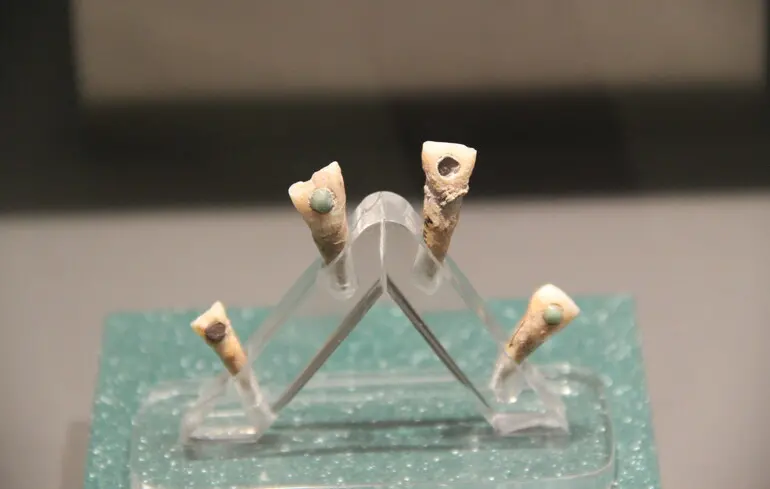Archaeological Discoveries Unveil New Secrets About Mayan Children’s Traditions: Jade Dental Adornments in Youngsters Aged Seven and Above

Recent excavations in Guatemala have shed new light on the customs of ancient Maya civilization, especially their practice of decorating teeth with precious stones.
At the Popol Vuh Museum, researchers uncovered unique artifacts — three teeth belonging to young Maya children aged seven to ten years, which contained inlays made from green jade.
These findings provide compelling evidence that Maya children, from a very young age, participated in significant social and ritual traditions, highlighting the importance of adornment and status symbols even during childhood.
Such inlays were common among adults during the classical period (250–900 CE) and the post-classical period (900–1550 CE), but cases involving children remain poorly documented.
The scientists analyzed upper incisors, canines, and lower incisors to determine whether these teeth belonged to a single individual.
Due to the absence of skeletal remains, firm conclusions are challenging; nevertheless, the idea that young Maya were intentionally decorated in this manner underscores the cultural significance of such modifications.
Researchers note that in adolescence (10–15 years), such inlays became rare, with teeth typically only being filed or engraved without embedded stones, and similar adornments appearing infrequently among 15–20-year-olds.
The jade inserts were carefully placed into drilled openings using stone tools, without damaging the pulp or inducing caries, indicating that the modifications were made during the individuals’ lifetime.
This counters previous assumptions that such dental decorations could be post-mortem or ceremonial.
These artifacts might have symbolized initiation into social adulthood or signified acceptance of adult responsibilities.
While interpretations are speculative, the findings suggest a complex social and ritual significance behind these modifications.
Additionally, the research hints at the advanced symbolic communication of Maya society, with analysis of the Stela Q at Copán suggesting that the positioning of rulers’ hands depicted key dates in the Long Count calendar, revealing a high level of literacy through gesture-based script.
Overall, these discoveries deepen our understanding of Maya culture, revealing intricate customs of adornment, social structure, and spiritual beliefs.

